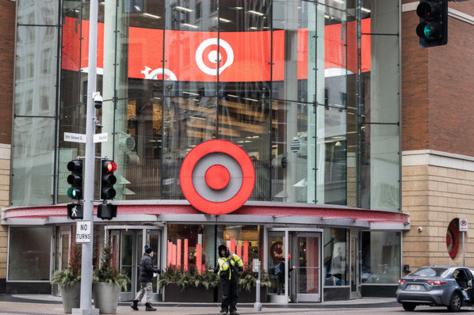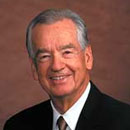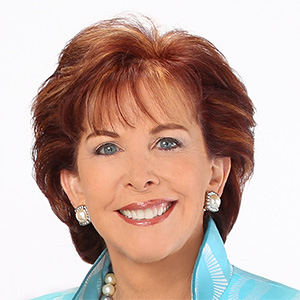Evan Ramstad: The vibe isn't great at Target today, but things were much worse in 2014
Published in Business News
The vibe is tough at Target these days.
Once widely beloved by social activists and fast-casual fashionistas, Minneapolis-based Target now is accused by Black media leaders and activists of turning its back on diversity. Investors think the retailer missed out on data centers. And President Donald Trump’s tariffs may wipe out the company’s profit.
So things look pretty challenging for new CEO Michael Fiddelke, a Target lifer who came up through finance and other roles in its downtown headquarters.
And yet things were more challenging 11 years ago, when Brian Cornell became the first outsider to lead Target.
A lot happens over a decade, and recency bias makes us think that whatever is happening now is bigger, badder or just more than before. Which means it’s easy to forget what Target was like in the summer of 2014.
Its business model of building stores in growing population centers, which yielded rising sales and profits for about 25 years, seemed played out. After a long period of adding 20 or 30 stores a year, Target’s U.S. store count fell by three in 2014 and grew by two in 2015.
Meanwhile, an expansion into Canada went so badly Target was internally forecasting it would lose money there for at least five years. Canada had already pushed Target’s overall profit downward for two years.
But the real problem facing Target was that it didn’t have a strategy for dealing with the consumer shift to shopping on computers and smartphones.
Of course it had a website at the time, and its digital-related business contributed half of its comparable sales growth in 2014. It was not, however, focused on how rapidly things were changing, said Doug Baker, who joined the Target board of directors in 2013 and is now its longest-serving member.
Baker, the retired CEO of St. Paul-based Ecolab, told my colleague Carson Hartzog and me this summer that Target’s foray into Canada, in addition to producing financial losses, was distracting executives and diverting resources from what he considered an existential threat posed by the analog-to-digital transformation of shopping.
“I say it was existential because we were on a path that would’ve left us too far behind to catch up,” Baker said.
For him, companies fall into three big categories, and it’s the job of a CEO to sort out what will make a company soar and what will kill it.
“I would describe it as nonsurvivors, survivors and thrivers,” Baker said. Target in 2014 was “on the border of `Are we a survivor or a nonsurvivor?’ Nobody was even wondering if we were going to thrive.”
Within eight months of arriving at Target, Cornell took the most difficult actions of his 11 years atop the company.
He ended the Canada project, eliminating more than 17,000 jobs there. A few weeks later, he restructured the entire company, a process that ended 1,700 jobs, or 13%, in its corporate offices downtown and in Brooklyn Park. It was the biggest downsizing in absolute numbers in Minnesota since 2002, and none has come close since.
Initially, Cornell threw money and talent at innovation labs and projects. In 2017, in the face of stalling sales growth, he pulled back from those investments and focused on updating Target’s branded products, remodeling stores and creating a delivery model for digital orders that took advantage of its 1,800-store footprint in the U.S.
When the pandemic came in 2020, those moves paid off. For consumers staying at home under government orders, Target was ready for delivery or store pick-up.
Its sales exploded in 2020 and 2021, with revenue that had hovered around $70 billion rising past $100 billion. And investors were rewarded with gains unseen since the late 1990s. Target’s shares, which spent much of the 2010s in the $50-$70 range, peaked at $260 in July 2021.
Target has preserved those sales gains, but it hasn’t been able to build on them over the last three years. Its stock closed at $98.69 on Wednesday, a 6% drop. It was last at this price in April 2020.
The stall-out since 2022 has led some critics to say Cornell got lucky.
“He was really like the novice blackjack player sitting at the table when the dealer busts,” Chris Walton, a former Target executive who was part of Cornell’s pre-2017 innovation drive, told me earlier this summer. “You think you’re good, but you’re really not. You just got dealt a good hand.”
That assessment is much too harsh. Target under Cornell clawed out of the mess in Canada and finally moved beyond the build-it-and-they-will-come strategy that made sense in the 1980s and 1990s, when the country was growing much faster.
With Cornell, Target solved the last-mile problem that vexed its e-commerce rivals by making its stores a key link in fulfilling digital orders. That pushed up one key measure of efficiency, revenue per square foot of the company’s space, to around $450 today from around $350 in much of the 2010s.
Target in 2022 announced Cornell would likely retire in fall 2025. Fiddelke’s appointment ends a leadership vacuum that grew as the date neared.
He’s got a lot to do. Target needs to start growing again. That’s challenging, but it’s not a crisis.
“I consider us in a very different place — team talent, tech capabilities, understanding how retail really works, understanding where the customer is going. We don’t have a Canada to fix,“ Baker said. “So, it’s not an existential question anymore.”
———
©2025 StarTribune. Visit at startribune.com. Distributed by Tribune Content Agency, LLC.












Comments